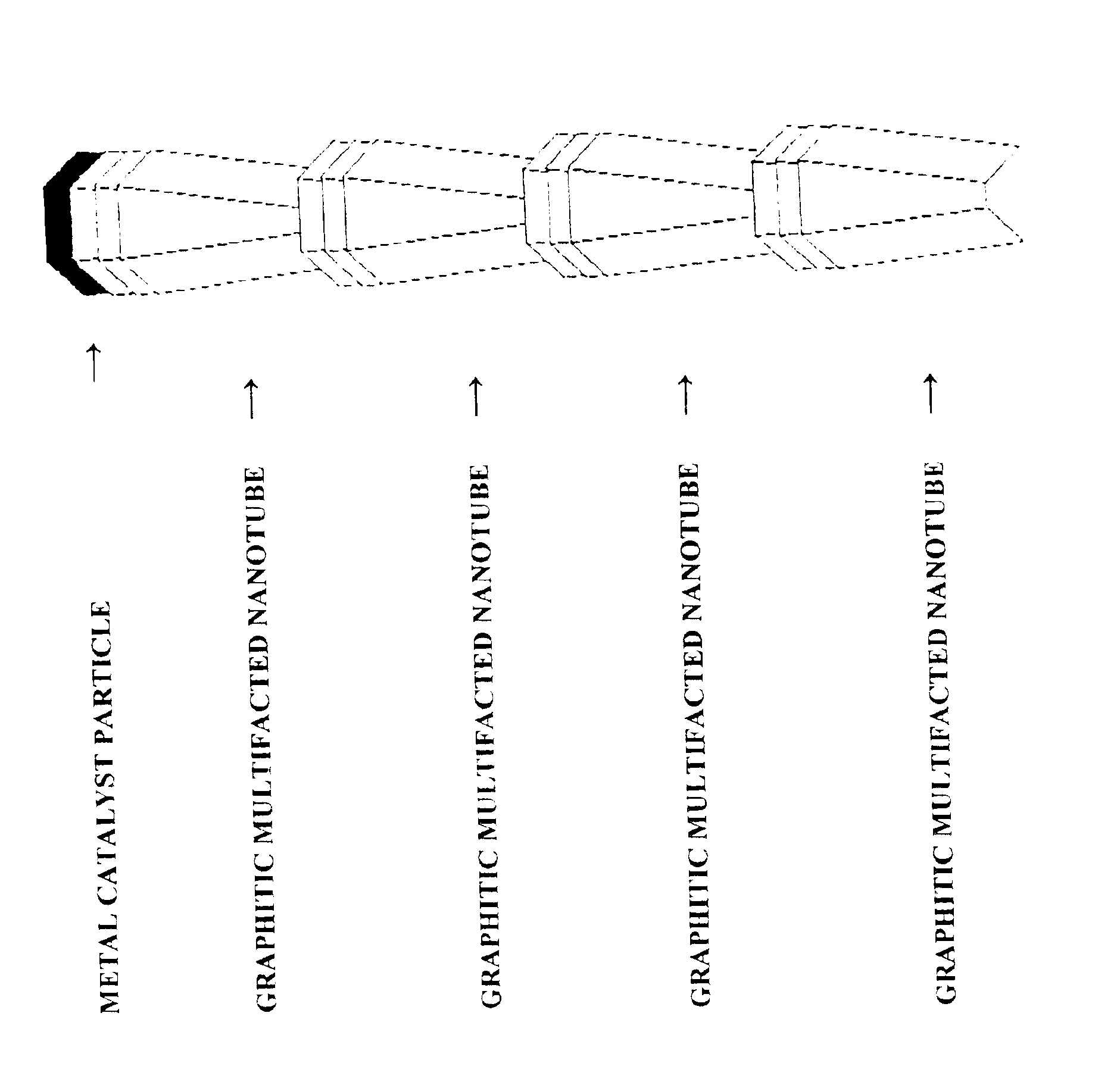Preparation of multifaceted graphitic nanotubes
a graphitic nanotube and multi-faceted technology, applied in the field of preparation of multi-faceted graphitic nanotubes, can solve the problems of large reduction of nanostructure yield, difficult control of nanostructure width, and inacceptability
- Summary
- Abstract
- Description
- Claims
- Application Information
AI Technical Summary
Benefits of technology
Problems solved by technology
Method used
Image
Examples
example 1
[0026]
TABLE 1Effect of catalyst calcination temperature on the growth ofgraphite nanotubes (GNT) from the 48 wt. % Co / MgO catalyzeddecomposition of CO / H2 (4:1) at 600° C. for 2 hours.YieldCalcinationReduction(g-GNT / GNT widthAverage widthTemp (° C.)Temp (° C.)g-metal)range (nm)GNT (nm)50085072.92.5-23.08.770085016.72.5-20.07.5850850 2.12.5-15.05.7
[0027]
TABLE 2Effect of the CO / H2 ratio on the growth of graphite nanofibersusing a 48 wt. % Co / MgO at 600° C. for 2 hours. Catalystwas calcined at 500° C. and reduced at 850° C.CO / H2YieldGNT widthAverage widthratio(g-GNT / g-metal)range (nm)GNT (nm)100:139.54.0-37.012.6 39:177.03.0-25.0 9.5 19:179.02.5-24.0 8.9 12:174.52.5-23.0 8.6 9:174.52.5-23.0 8.6 4:172.82.5-24.0 8.7 2:166.64.0-29.011.9 1:160.35.0-39.017.0 2:335.45.0-44.020.7 1:2 8.35.0-49.022.4
[0028]
TABLE 3Effect of catalyst reduction temperature on the growth ofgraphite nanofibers from the 48 wt. % Co / MgO catalyzeddecomposition of CO / H2 (9:1) at 600° C. for 2 hours.Catalyst samples all...
PUM
| Property | Measurement | Unit |
|---|---|---|
| temperature | aaaaa | aaaaa |
| temperature | aaaaa | aaaaa |
| temperature | aaaaa | aaaaa |
Abstract
Description
Claims
Application Information
 Login to View More
Login to View More - R&D
- Intellectual Property
- Life Sciences
- Materials
- Tech Scout
- Unparalleled Data Quality
- Higher Quality Content
- 60% Fewer Hallucinations
Browse by: Latest US Patents, China's latest patents, Technical Efficacy Thesaurus, Application Domain, Technology Topic, Popular Technical Reports.
© 2025 PatSnap. All rights reserved.Legal|Privacy policy|Modern Slavery Act Transparency Statement|Sitemap|About US| Contact US: help@patsnap.com

